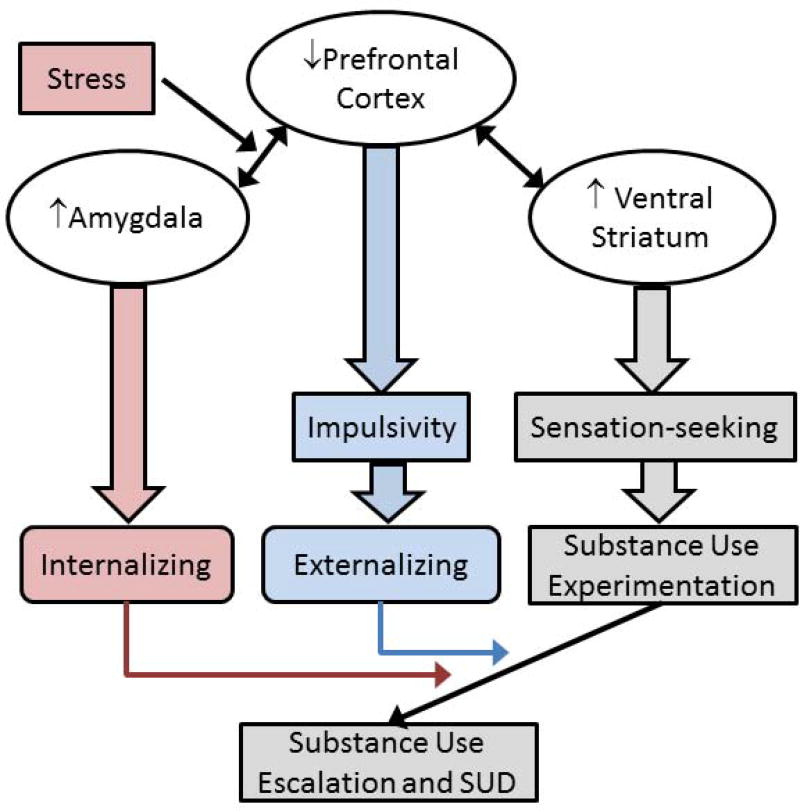Figure 1.
Theoretical schematic of the influence of sex differences in adolescent brain development on vulnerability pathways to substance use disorder (SUD). Gray indicates pathways proposed to influence girls and boys similarly. This illustrates the suggestion that normative increases in ventral striatal responsivity during adolescence may account for comparable levels of substance use in girls and boys. Blue indicates pathways proposed to be more influential in boys than girls. Weaker inhibitory control due to individual differences in prefrontal cortex development may underlie greater externalizing problems, which in turn influences progression of substance use and development of SUD. Red indicates pathways believed to be more influential in girls than boys. Developmental imbalances between amygdala and prefrontal cortex increase emotional lability, enhancing vulnerability to internalizing problems, which in turn influences progression of substance use and development of SUD. Stress impacts this pathway.

